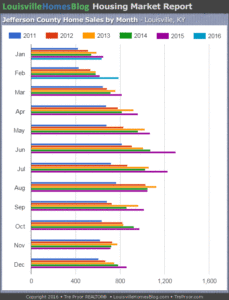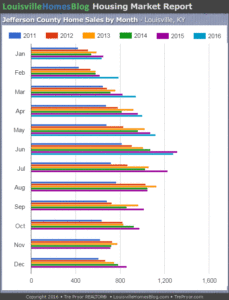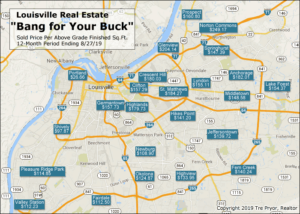Now that the new year is officially here, what is in store for Louisville real estate in 2017? After our record-setting year in 2016, it might be difficult to match… but here are the biggest stories as we head into the new year.
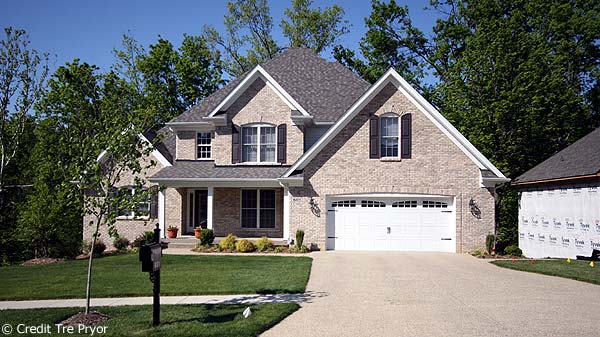
1. Where Are the Homes?
Number one on the list is most certainly housing inventory. There’s simply not enough of it!
A balanced market is when buyers and sellers are roughly on the same footing. Experts believe that’s when there is about six months of inventory available.
Ok, you are warned… this next chart is not for the faint of heart.
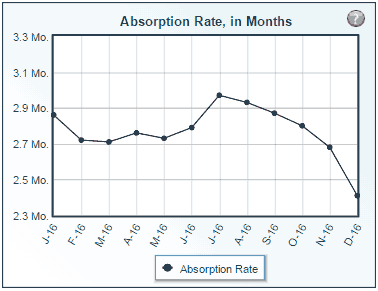
The absorption rate looks at how many months will it take to sell out if no new listings come onto the market and the sales rate remains constant. Obviously, this is not good news for home buyers. But at the same time, it’s great news for home sellers!
Most often, making a move with real estate means both a sale and a purchase but not always. Depending on your situation, our current market could be good for you or bad. Moving up? Downsizing? Makes a big difference.
2. Demand Will (Still) Be Strong
Even though 2016 was a record-setting sales year for Louisville real estate, there’s still a great deal of demand, in part due to many postponing a move during the housing recession.
Louisville’s population increase hasn’t been crazy during the past decade according to the Census Bureau. But one segment does stand out:
Among large metros, Providence, RI; Rochester, NY; and Boston, MA, had the greatest percentage of Total Young Adult in-movers, about 60 percent. Providence, RI; Rochester, NY; and Buffalo, NY, were still among large metros with the greatest 18- to 24-year-olds in the 2010–2012 post-recession period.28 About 20 percent of all in-movers were aged 25 to 29 in San Jose, CA; Chicago, IL; and New York, NY. San Jose, CA; San Francisco, CA; and Louisville, KY, were among large metros with the greatest percentage of 30- to 34-year-olds.
For this age group, Louisville has seen large increases, and with it a good number of new home buyers.
The speed with which homes sell is another factor to consider. In 2015, the average CDoM was 78. During 2016 this number dropped to 64. This includes all sold properties, even those “clunkers” that were overpriced or in need of major improvements. Faster sales mean higher demand.
3. Money Is Super Cheap
The number one factor when considering demand is the cost and availability of credit. I wrote this piece last month, Louisville Mortgage Rates and Your Home Purchase, which included the chart below.
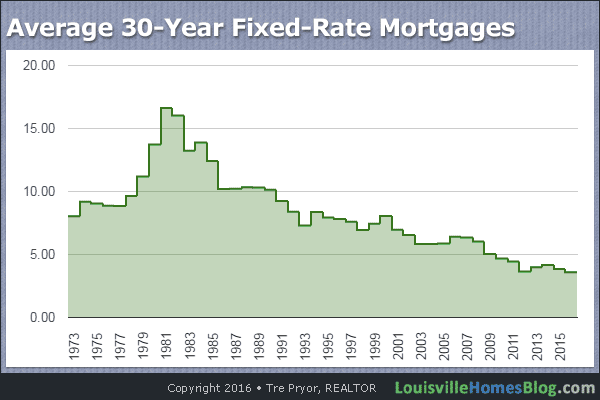
Rates will rise in 2017, that’s now almost universally accepted. But looking at things from a long-term perspective, mortgage rates will continue to be incredibly affordable for the foreseeable future.
4. New Construction is Back
After taking a forced hiatus due to the housing recession, Louisville new construction is finally back near pre-recession totals. Data is more difficult to obtain as many transactions never make it to the MLS.
For what it’s worth, our database reports that 1,216 new homes were sold in 2016. Compared to just 999 in 2015, this is almost a 22% increase!
From my own real estate business, as well as, talking to local builders, there seems to be a resurgence in new construction that we haven’t seen since 2008. I will be writing a piece on new construction options in and around Jefferson County in the coming months, so check back for it.
Conclusion: Louisville Real Estate in 2017
I don’t expect Louisville real estate in 2017 to beat this past year in terms of home sale activity but it wouldn’t surprise me if it did. The pivotal factor will be Louisville homeowners who’ve been sitting on the sidelines. Will they finally jump in? Or, is “standing pat” their answer?
As a great 80’s band, Asia, once said, Only Time Will Tell.

